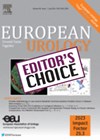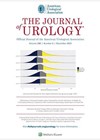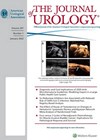
Journal Reviews
Prevalence, diagnosis, and management of SUI in women
Stress urinary incontinence (SUI) is a widespread condition characterised by involuntary urine leakage triggered by physical activities such as coughing, sneezing, laughing, or exercise. Despite significantly impacting the quality of life (QoL), SUI remains underdiagnosed and undertreated, creating a substantial...
Antibiotics and HoLEP
Holmium laser enucleation of the prostate (HoLEP) is an increasingly done size-independent surgical treatment for benign prostatic hypertrophy. There is currently a lack of data on perioperative antibiotic prescribing patterns for HoLEP and thus, no consensus on optimal practices. This...
Sepsis – still a dilemma
Thousands of people die each year in the UK and worldwide due to types of sepsis, including urosepsis. Urologists are facing this scenario day in day out, so this is a vital article for every reader. We are all familiar...
Keep it simple: a proposal for a new definition of uncomplicated and complicated UTIs
Urinary tract infections (UTIs) are one of the most common bacterial infections in both community and healthcare settings, leading to frequent antibiotic use. They range widely in severity, from mild cases like cystitis to severe, potentially life-threatening conditions such as...
Effect of DUA on surgical outcomes of HoLEP
Lower urinary tract symptoms (LUTS) become increasingly common in men as they age, with over 70–90% of men aged over 80 experiencing these issues. Detrusor underactivity (DUA) is characterised by a weakened bladder contraction, leading to prolonged or incomplete bladder...
Long-term complications of bulking agents in the treatment of SUI
Incontinence poses a substantial economic burden on the UK’s NHS, estimated at £536 million in 1999/2000, equivalent to approximately 1.1% of the total NHS spend, for both men and women. Over two decades later, this cost is expected to have...
Can transcutaneous peroneal nerve stimulation treat OAB?
The peroneal nerve follows sacral, pudendal, and tibial nerves as a target for overactive bladder (OAB) treatment. This multicentre prospective randomised RCT compared a transcutaneous electrical neuromodulation system (eTNM) at-home treatment once daily for 30 minutes to solifenacin 5mg once...
Catheter-free wireless ambulatory bladder pressure monitor
Urodynamics (UDS) is a useful physiological test for the assessment of a range of lower urinary tract disorders. A key limitation of standard UDS is its inability to record measurements of bladder pressure, flow, etc. in real-time situations and the...
Botox® instillation into the bladder
Patients with refractory overactive bladder (OAB) may be offered OnabotulinumtoxinA (Botox®) as one of the third-line options. Given the invasive nature of requiring cystoscopy, injections via a needle and local anaesthesia, it would be simpler, more convenient and more accessible...
Prodromal period of Fournier’s gangrene
Necrotising soft tissue infections of the genitalia (NSTIG), commonly known as Fournier’s gangrene, is a rare but important surgical emergency associated with significant morbidity and mortality. It is estimated that every six hours of delay in surgical debridement leads to...
Refining management of non-visible haematuria
The optimal evaluation of non-visible haematuria (NVH) continues to be debated, with competing interests of avoidance underdiagnosis and the harms of over-testing. Current National Institute for Health & Care Excellent (NICE) guidance recommends referral for patients ≥60 years with NVH....
The urinary microbiome in IC/BPS: more complicated than we imagined
The concluding statement of this short review states, “the study of the urinary microbiome and its impact on urological disease, including IC/BPS, is in its infancy.” A lot has been said on this subject in recent years, but this, in...















